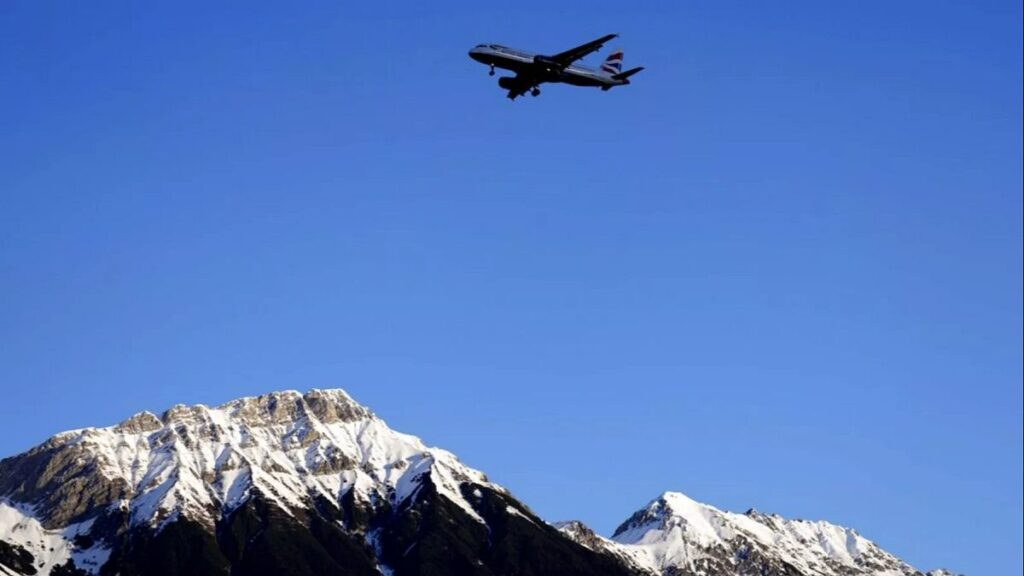Challenging airport conditions mean flights are more prone to turbulence, bumpy landings and delays.
While Madeira is a dreamy holiday destination, arriving on the island can sometimes be an unsettling experience.
Funchal Airport is considered one of the most dangerous in the world to fly into. It can mean that landings are bumpy or that flights experience delays and cancellations if the weather is poor.
However, this shouldn’t put you off travelling there as pilots are expertly trained to handle the challenging conditions.
Zbigniew Mlotkowski, director of crew training at Lithuanian charter airline KlasJet, explains how pilots are prepared for the most difficult take-offs and landings and what it means for passengers.
Short runways and nearby mountains: What makes an airport dangerous
Airports are classed as dangerous based on several factors. One of the main considerations is terrain. Surrounding mountains often make landings difficult, requiring pilots to employ special procedures.
Weather conditions are also important because strong winds in combination with hills and mountains can cause local turbulence. Crosswinds can impact aircraft handling and control while microbursts create sudden downdrafts, causing aircraft to lose altitude.
The dimensions of the runway also play a crucial role. A short and narrow runway requires honed skills for a pilot to maintain the arrival path.
Europe is home to two of the world’s most dangerous airports
Madeira Funchal Airport (FNC) is known for its challenging runway. One end is built on concrete pillars with nearby steeply climbing terrain. The other end is close to cliffs, forcing aircraft to stay off the central approach line until they are about to land.
Winds from nearby mountains create local turbulence, which often causes flight delays or cancellations.
Last summer, strong winds forced over 80 flights to be cancelled or diverted over a three-day period in August.
Another airport known for difficult runway conditions is Innsbruck Airport (IIN) in Austria. It is located in the Alps within a valley surrounded on almost all sides by high, rocky mountains.
This requires special procedures to be followed during approach and landing. Any small deviation from the designed tracks may bring the aircraft close to mountains, potentially affecting safety.
Pilots undergo rigorous training for challenging airports
Each complex airport requires skilful handling and very accurate calculations to ensure that the safety of the flight is not compromised in different weather conditions.
“Special procedures are required for each phase of flight, such as approach, landing, and missed approach, which must be executed by pilots if for any reason aircraft cannot land,” Mlotkowski says.
“There are usually special procedures designed for such an airport, which allow continuing safe flight even with only one engine operating.”
To get familiar with complicated airports, pilots must undergo simulator training. This allows them to put previous experience and theoretical knowledge into practice in safe conditions.
“The simulator provides detailed visualisation of all-natural and man-built objects in the vicinity of the airport, preparing pilots for flight to the real airport,” Mlotkowski says.
“In addition, in simulators, there is the possibility to activate all possible weather phenomena that are applicable for particular airports, so pilots can improve their skills and be ready to conduct safe flight in [the] worst weather conditions.”
Very complex airports require special approval for instructors, which must be obtained before they can provide training for other pilots.
All complicated airports require only captain landing and take-off because captains are more experienced.
“European regulations require recurrent training both theoretical and practical for pilots every 12 months. However, for very complex airports, the validity of such training is reduced to six months, to assure that knowledge and skills are on the highest level,” Mlotkowski says.
Should you be worried about flying into a dangerous airport?
Travellers may have concerns about flying into an airport branded as dangerous – and there are some issues of comfort and convenience to consider.
Airports surrounded by mountains are prone to turbulence, which can make landings uneven.
Mlotkowski says shorter runways may also mean touchdown is not always smooth – what is called a ‘positive landing’ in the industry. Skiathos in Greece, Florence in Italy and San Sebastian in Spain are some places passengers might experience this.
More demanding airports where weather is a big safety factor can also see more common delays as schedules are temporarily adjusted to avoid potentially dangerous conditions.
Passengers might also experience ‘holding’, where an aircraft has to wait for a while in the air for a weather change that allows it to land safely.
Occasionally, if the wait is drawn out and too much reserve fuel is being burnt, the pilot may make the decision to reroute to an alternative airport.
However, Mlotkowski emphasises that all possible precautions are taken to ensure challenging runways and weather conditions are navigated safely.
“All pilots are trained, experienced and well prepared to assure that our job is done safely and professionally,” he says. “This is our way of life.”
Premium IPTV Experience with line4k
Experience the ultimate entertainment with our premium IPTV service. Watch your favorite channels, movies, and sports events in stunning 4K quality. Enjoy seamless streaming with zero buffering and access to over 10,000+ channels worldwide.

















